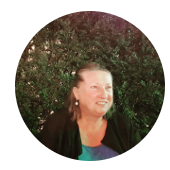-
Member Login
- Home
- About
- Institute Groups
- Membership
- Events
- News & Publications
- Institute Programs
- Resources
- Jobs Board
- Contact Us
- Site Info
Maggie Baron and Sheridan Blunt
Maggie Baron and Sheridan Blunt
Abstract | Metro Tunnel – Embedding urban ecology performance targets in infrastructure projects
Construction is now underway for Victoria’s Metro Tunnel Project.
MMRA’s challenge during procurement and the development reference design was that there was limited guidance available about what best practice or excellence looked like in the green-blue infrastructure space. MMRA wanted an industry leading approach to green-blue infrastructure which is a key element of the project.
MMRA have driven opportunities in this area through the development of the ‘Metro Tunnel Living Infrastructure Plan’. The Living Infrastructure Plan informs design and construction; outlining approaches to enable Urban Ecology and Vegetation and Water sustainability targets being met.
The Living Infrastructure Plan sets out existing conditions, guiding principles, practice notes and action measures to support the delivery of Sustainability Targets for the Metro Tunnel Project that relate to living infrastructure.
These targets include doubling tree canopy cover by 2040, best practice stormwater management, net gain in vegetated surface area post construction and 25% of plantings to contain diverse, multi-storey plantings for biodiversity. To plan for the Metro Tunnel Project’s living infrastructure, a ground-breaking collaborative agreement was established between Melbourne Metro Rail Authority and the not-for-profit advisory group Loci Environment & Place Inc.
Through the partnership between Loci and MMRA, we have been able to develop a program of progressive multi-disciplinary urban sustainability opportunities as well as ensuring the new knowledge generated by this project will be shared for the benefit of other urban practitioners via its capacity building program.
The living infrastructure initiatives for the $11bn Metro Tunnel project include:
- Canopy targets for replacement and additional trees, supported by rigorous tree protection requirements.
- Vegetation targets that ensure no net loss of garden area and the creation of tiered vegetation to provide habitat to support inner city biodiversity.
- Development of design typologies for water sensitive urban design and tree pits, drawing on expertise from engineering, arboriculture, soil science, landscape architecture and urban ecology.
- Preparation of a suite of soil specifications to support canopy growth.
Bio | Maggie Baron
 Maggie Baron has extensive experience in strategic and statutory planning; environmental management; managing places of cultural heritage significance (Indigenous and post-European settlement), as well as program and project risk management. Her roles include leadership positions in the public and private sectors, as well as mentoring practitioners within Australia and overseas.
Maggie Baron has extensive experience in strategic and statutory planning; environmental management; managing places of cultural heritage significance (Indigenous and post-European settlement), as well as program and project risk management. Her roles include leadership positions in the public and private sectors, as well as mentoring practitioners within Australia and overseas.
Bio | Sheridan Blunt
Sheridan Blunt has been Executive Manager of Loci Environment & Place Inc. since its formation in July 2015 and is responsible for driving a new and collaborative approach to city making. Loci Environment & Place Inc. is a non-profit organisation committed to connecting different fields of expertise in urban sustainability for greater knowledge sharing. Sheridan delivers policy solutions across all sectors, and delivers a range of multi-disciplinary training and events for city shaping practitioners via Loci’s knowledge exchange program, the Planning Institute of Australia’s Planet program, and as a Studio Leader and tutor for the University of Melbourne’s Masters of Urban Planning program. Sheridan was City Sustainability Coordinator at Moonee Valley City Council for five years, Sustainable Water Program Coordinator at City of Melbourne for six years, environmental planner in the Philippines and an urban planner in both the Victorian and NSW State Government.
We acknowledge and value the rights and interests of Indigenous Peoples in the protection and management of environmental values through their involvement in decisions and processes, and the application of traditional Indigenous knowledge.

